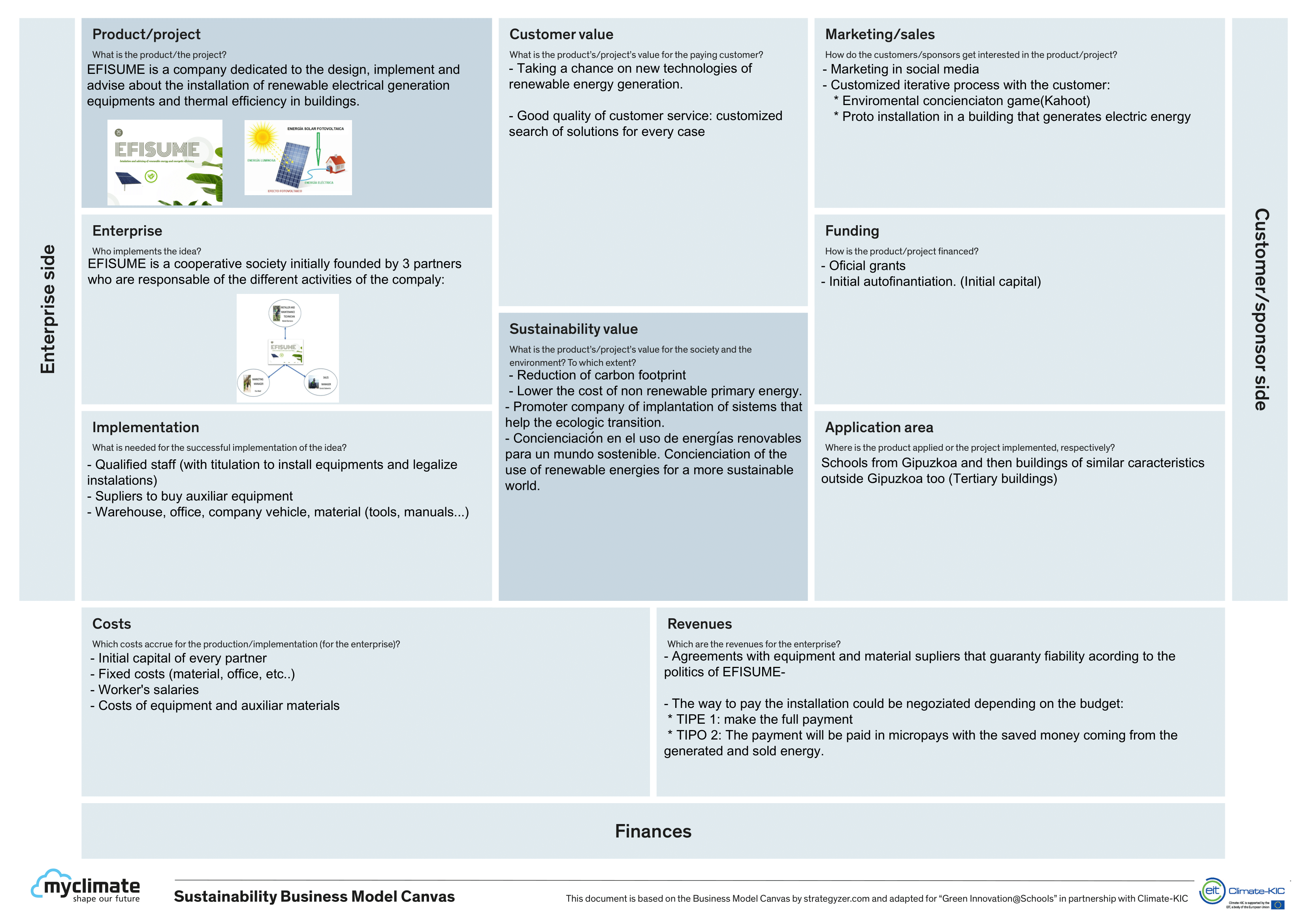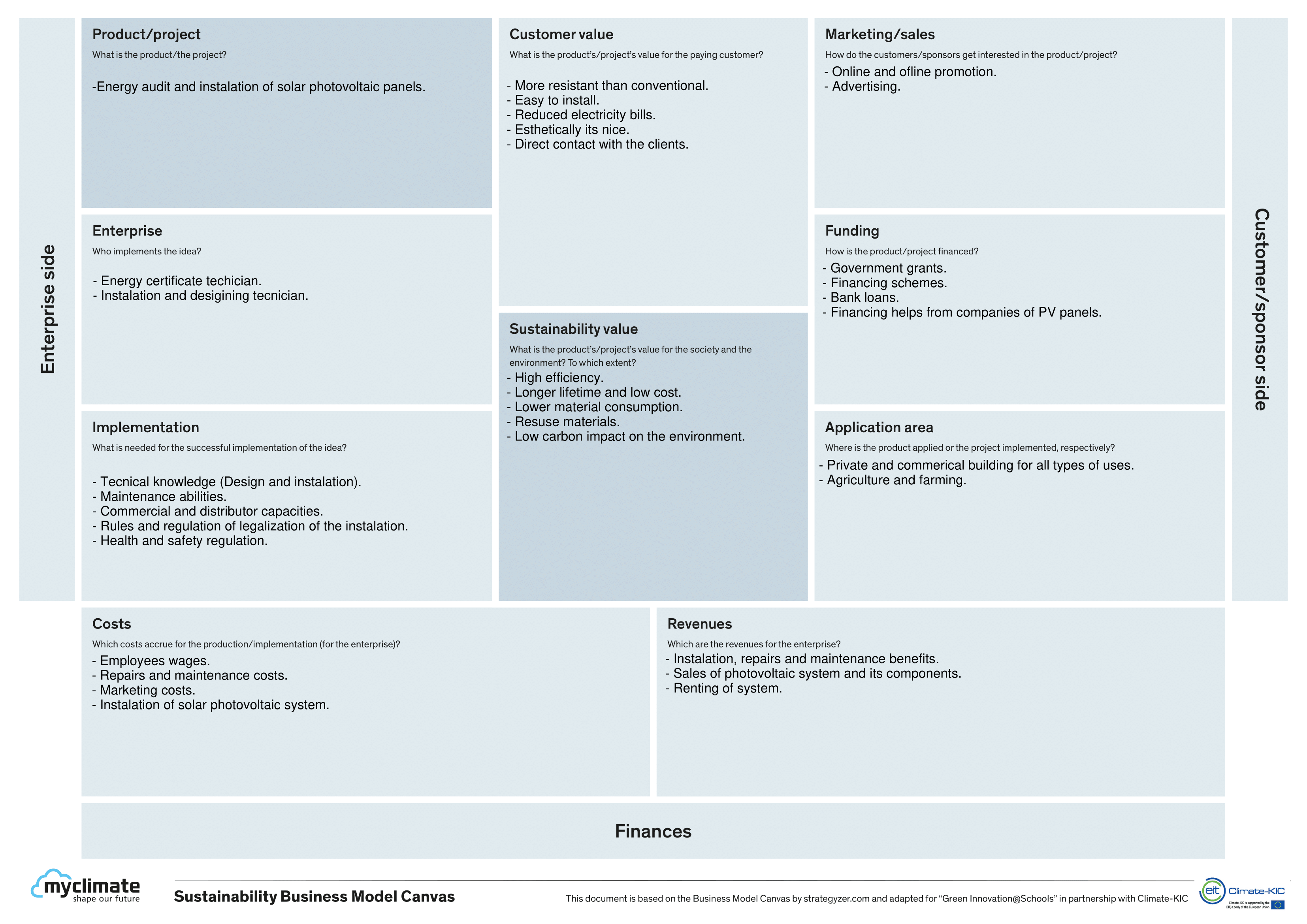Spain
CIFP Usurbil LHII
CIFP Usurbil LHII is a public Vocational Training School, which delivers training in five different fields: Mechanical Manufacturing, Electricity and Electronics, Business and Finance, Installations and their Maintenance and Energy Efficiency and Water. The school provides as well certified continuous training and lifelong learning for active and unemployed workers, organizes awareness building workshops about renewable energies in collaboration with the provincial councils.
www.lhusurbil.eus1st. Place: Efisume Eva Abad Gurutz Salaverria Markel Barranco Assignment Winner
"Clear, dynamic and full on comprehensible data. Awesome."
"A well designed marketing strategy combined with a good structured presentation, that convinces through a detailed financing plan."
"We liked this project because it offers a sustainable solution, which generates great economic and energy savings and reduces CO2 Emissions. Besides that, it was presented in a very concise, clear and entertaining way."






